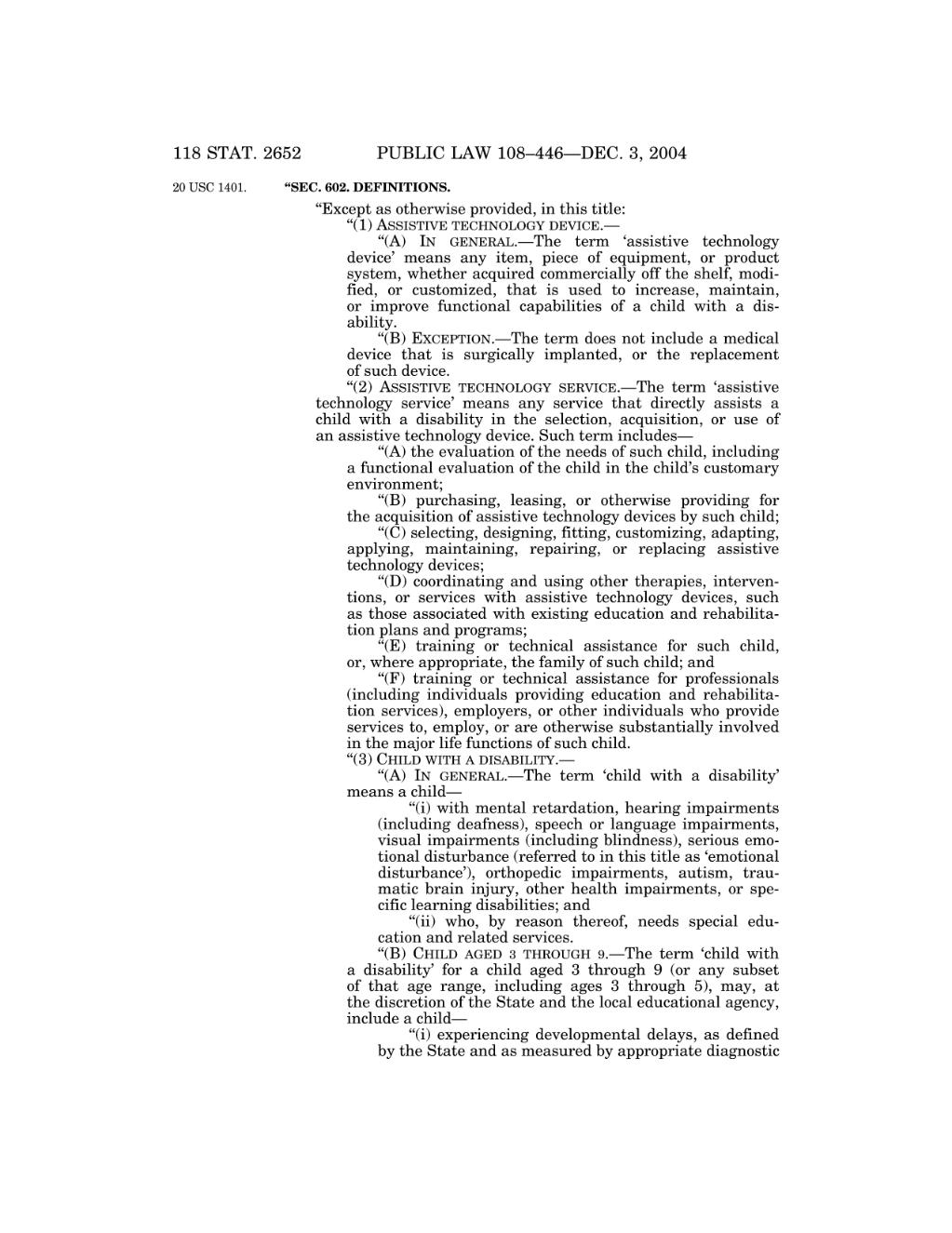118 STAT. 2652 PUBLIC LAW 108–446—DEC. 3, 2004 ‘‘SEC. 602. DEFINITIONS. ‘‘Except as otherwise provided, in this title: ‘‘(1) ASSISTIVE TECHNOLOGY DEVICE.— ‘‘(A) IN GENERAL.—The term ‘assistive technology device’ means any item, piece of equipment, or product system, whether acquired commercially off the shelf, modi fied, or customized, that is used to increase, maintain, or improve functional capabilities of a child with a dis ability. ‘‘(B) EXCEPTION.—The term does not include a medical device that is surgically implanted, or the replacement of such device. ‘‘(2) ASSISTIVE TECHNOLOGY SERVICE.—The term ‘assistive technology service’ means any service that directly assists a child with a disability in the selection, acquisition, or use of an assistive technology device. Such term includes— ‘‘(A) the evaluation of the needs of such child, including a functional evaluation of the child in the child’s customary environment; ‘‘(B) purchasing, leasing, or otherwise providing for the acquisition of assistive technology devices by such child; ‘‘(C) selecting, designing, fitting, customizing, adapting, applying, maintaining, repairing, or replacing assistive technology devices; ‘‘(D) coordinating and using other therapies, interven tions, or services with assistive technology devices, such as those associated with existing education and rehabilita tion plans and programs; ‘‘(E) training or technical assistance for such child, or, where appropriate, the family of such child; and ‘‘(F) training or technical assistance for professionals (including individuals providing education and rehabilita tion services), employers, or other individuals who provide services to, employ, or are otherwise substantially involved in the major life functions of such child. ‘‘(3) CHILD WITH A DISABILITY.— ‘‘(A) IN GENERAL.—The term ‘child with a disability’ means a child— ‘‘(i) with mental retardation, hearing impairments (including deafness), speech or language impairments, visual impairments (including blindness), serious emo tional disturbance (referred to in this title as ‘emotional disturbance’), orthopedic impairments, autism, trau matic brain injury, other health impairments, or spe cific learning disabilities; and ‘‘(ii) who, by reason thereof, needs special edu cation and related services. ‘‘(B) CHILD AGED 3 THROUGH 9.—The term ‘child with a disability’ for a child aged 3 through 9 (or any subset of that age range, including ages 3 through 5), may, at the discretion of the State and the local educational agency, include a child— ‘‘(i) experiencing developmental delays, as defined by the State and as measured by appropriate diagnostic 20 USC 1401.
�
